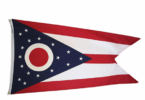By Paul Kemp
Kratom, a Simple Herb, Is Upstaging Expensive Prescription Drugs
The story of how the herb kratom will be treated by the FDA and other regulatory agencies may signal whether health in the USA will continue to get worse, or will it take a turn toward a brighter future.
Kratom, the crushed leaf of a tree that grows in Southeast Asia — could be a game-changer when it comes to deciding the direction of health care in the United States. It is that important — and, for that reason, there is a fierce battle going on between those who want to keep it legal (and prudently used) and those who want it banned, discredited, and forgotten.
We just passed the Fourth of July holiday, but how much medical freedom do we still have?
Will Americans still be allowed the freedom to choose this herb over depressing, suicide-inducing pharmaceutical drugs at this time next year?
For an average of 22 U.S. military veterans committing suicide each day, due — in part — to the VA’s reliance on psychotropic pharmaceutical drugs as the most frequently used palliative treatment, the clock is ticking.
People with PTSD and many other pains, both emotional and physical, could be finding new hope if the truth about this misunderstood plant was more widely known.
Kratom, Mitragyna Speciosa, is an herb that by itself is replacing multiple prescription drugs for hundreds of thousands of Americans. Are you one of those who are benefiting? Or are you worried this herb is as bad as the DEA and TV news reports say?
The truth may shock you, when you learn how you are being lied to about kratom.
Users say kratom is nothing like another herb — medical marijuana — that is increasingly accepted by Americans as an option for those who suffer from a variety of medical conditions.
Unlike marijuana or even cannabidiol (CBD), kratom leaves prudent users surprisingly clear-headed and fully functional.
Will kratom remain legal at the federal level, as it is now, or will this promising alternative painkilling and mood-lifting herb be banned?
This report from the front lines of pain relief may help you discern the truth about this remarkable herb.
Why Pain Relief Is a Key Battleground in U.S. Health Care
Why Is Pain Relief Is Such a Big Issue?
To understand why kratom is such a threat to the pharmaceutical industry — a monster power player in the modern world — you need to learn a little about how they profit off keeping us sick and dependent on their drugs — for life, ideally.
The open secret of the pharmaceutical industry is that they are, like most businesses, “in it for the money”. No big surprise, there.
Many Americans suspect this, but they don’t realize just how cold and callous Big Pharma is when it comes to deciding which drugs they will spend their money developing and testing.
Drug research and development is a frightfully expensive undertaking — which eliminates small-fry competition — and it limits the kind of drugs we will ever get from Pharma.
In general, all medical “cures” must be pharmaceutical drugs (according to the FDA rules), but the only substances Big Pharma will produce must be slightly different and unique at the molecular level, which ensures that they will have some side-effects that natural isolated alkaloids will not have.
(Our bodies are used to processing herbal alkaloids. Our body even produces endogenous cannabinoids and endogenous morphine — endorphins — so it recognizes these from centuries, even millennia of use. Synthetics with the necessary slightly twisted molecular structure are unfamiliar and thus, may create some level of side-effects.)
So, Pharma’s hands are tied by the rules they helped make to protect their investment in R & D. It was a brilliant business decision — as far as moneymaking goes — but it hasn’t served the American people very well. Just look around you and see how Americans’ health stacks up with other prosperous, developed nations.
To put it mildly, Our Health Sucks!
For the purposes of this Hub, let’s not get into the argument over whether having universal health care would solve all of our problems. Even if we had universal care, it would still be provided with pharmaceutical industry drugs, primarily, through their trained sales reps, our Medical Doctors.
Here are the three critical factors that lower the quality of our Sickness Care (let’s get real — sickness care is what it is!):
- Big Pharma and U.S. medical doctors are for-profit businesses. Nothing wrong with profit, per se, but it tempts some to sell unnecessary procedures and drugs
- Pharma says it is looking for cures, but the evidence of what they research tells a different story — They prefer to treat symptoms, even when cures exist. (This is Big!)
- As we said a moment ago, herbs and natural nutrients are not considered — even though research shows they can be very beneficial, because if Pharma can’t patent a discovery, they will ignore it and you are unlikely to ever hear about it!
This leaves kratom an orphan, “out in the cold”, and attacked by the wolves of the corporate Media, which want to please one of their biggest advertisers — you guessed it! — Big Pharma.
The result is that we have a very controlled discussion in the Media and in the halls of government — managed by those who are only making money when we are sick. They have no financial incentive in keeping us well or to return us to health.
This leaves patients in pain and dependent on a continuing stream of pills, potions, and patches, etc.
Over time, drugs may stop relieving pain, necessitating frequent office visits to change prescriptions — and sometimes patients find they have been “cut off”, sending them off on a frantic search for alternative relief.
The result is that our health care costs us too much and doesn’t really solve the underlying problem.
Without removing the cause of the disease — and only treating the symptoms — the disease continues to worsen until the pain becomes unbearable — even with strong opioid narcotics — and patients must submit to extremely intrusive, expensive, and dangerous procedures such as surgery.
Most of this suffering is totally unnecessary, as I’ll explain in a moment.
There’s a lot more to this story, but to keep it simple, memorable, and entertaining, let’s just say that the U.S. health care system is influenced from start to finish by the people who stand to make the most money by keeping you alive enough to pay your medical bills, but so confused that you can’t figure out their game.
This puts a huge financial burden on patients, insurance companies, and government programs such as Medicare/Medicaid — and all unnecessary.
Kratom can be an eye-opener for those who have run the gauntlet of pharmaceutical options and are about ready for suicide when they discover an herb that can relieve their pain with relatively minor side-effects.
For Pharma, this enlightening discovery by patients is causing them to lose customers right and left. And these are their best customers, who are suffering the most — the ones who buy the most Rx drugs and surgical services, etc., because they know of no alternative.
Pharma is suffering layoffs and diminished sales, so we shouldn’t expect them to take this diversion of patients to kratom without a fight.
A February, 2012 survey suggested that 44% of pharmaceutical employees fear job loss. Perhaps the 900 lb. gorilla of the U.S. economy is not so healthy as we think.
Could it be that the whole failed monopoly created to treat symptoms and ignore simple, known, inexpensive remedies is on its way out?
Regular Users of Kratom Agree It Is a Better Pain Reliever Without the Debilitating Aspects of Powerful Opioids
Make no mistake: I’m not saying that kratom is a cure for anything. I am not saying it isn’t either — not enough research has been done to identify diseases it might cure. Remember most research funding is not spent looking for cures. treating symptoms is where the money is.
Research has already shown that kratom possesses some unique alkaloids with medicinal properties aside from those of pain relief. There are a couple of alkaloids which have been shown to lower blood pressure, the whole herb helps promote healthy insulin function, and antidepressant properties have been found in another study.
(If the herb were to be made illegal, this would have an impact on further research.)
Kratom is just a stepping-stone on the path back to a more natural, results-driven practice of complementary medicine, using nutritional supplements, herbs, and pharmaceutical drugs when each is indicated.
Kratom is obviously not the answer to all our health problems, but it deserves to remain an option for adults to use as they see fit.
What kratom is, however, is a better source of pain relief for many mental, physical, and emotional conditions. It is a pain reliever that doesn’t turn the patient into a zombie and leave them unable to sort out their problems or stay physically active in the affairs of daily life.
The main educational function of kratom at this time is as a wake-up call for Americans, in particular. It is a reminder that Big Pharma’s pain drugs are NOT better in many cases, they are merely very addictive profit-makers for the pharmaceutical industry, that are FDA-approved and are paid for by insurance — and this arrangement is impoverishing our country.
It is rather surprising that no-one in Congress or at the Government Accounting Office has ever called for an investigation of why Medicare/Medicaid are paying for drugs that only treat symptoms when the same diseases, with the same symptoms and mechanism of action were cured in farm animals 70-100 years ago.
One famous Naturopathic Doctor, Joel D. Wallach DVM, ND has been showing his human patients for 30 years how to use vitamin and mineral formulas, which are used in farm animals to prevent and cure diseases — and how the same formulas can be used to reverse joint degeneration, fibromyalgia, diabetes (type-2), and a host of other conditions in his patients.
Dr. Wallach tells the story of how he proved that cystic fibrosis was not an inherited disease, but rather a mineral deficiency — and he was fired and blackballed when he announced his discovery. You can read about this and many other fascinating discoveries that have been prevented from being released for public use because they would upset the medical dogma and profit schemes of the medical establishment. See his newest book, Epigenetics, featured below.
But the times, as Bob Dylan said, “they are a-changin'”. As it turns out hundreds of thousands of Americans are learning that kratom is a better pain remedy, antidepressant, muscle relaxer, antihypertensive, and anxiolytic than anything Pharma has got — and kratom has no significant side-effects, unlike cannabis or even cannabidiol.
So, it is natural that Big Pharma — one of the biggest media advertisers — might let the media know they want lots of stories about the dangers of kratom.
I have no proof of this, but the circumstantial evidence is very persuasive…
I’m guessing the FDA is caught in the uncomfortable position of having their biggest client (Big Pharma) leaning on them to do something about this herb that is helping Americans get free of their addiction to all sorts of pain, depression, anxiety, and other medications.
We hear drug rehab clinic officials making dire predictions of the danger of kratom, the addiction potential, the heroin-like nature of this simple herb. (And yet, we hear through our contacts from a big clinic in Florida that they haven’t seen one person check in for getting off kratom.)
And yet, there is a counter-trend of states beginning to legalize another formerly condemned herb — medical marijuana — which is bringing millions of dollars back into the United States, both in tax money for states, and money for local economies.
With more than half of the Americans surveyed in 2014 by the Pew Research Center, and about two-thirds in favor of no jail time for pot users, it would seem perverse to crack down on another herb — kratom — which is far less intoxicating than medical marijuana, hardly worth calling it a “high” at all.
The FDA seems to be turning a blind eye toward the growing trend toward the legalization of marijuana and its use as a medicine. Might the same accommodation be made for kratom?
Kratom is nothing like marijuana in its effects. Used to excess, kratom does much the same thing as drinking too many beers — it may cause nausea, but (unlike beer or pharmaceuticals) kratom doesn’t cause fatalities when used to excess.
And so, the FDA and other regulatory agencies are no doubt trying to figure out what to do about kratom, this embarrassing little herb that is making our fancy, expensive, (and often fatal) health care system look bad.
To their credit, the FDA seems to be showing unusual forbearance with regard to kratom. But, truth be told, I have no way of knowing what they are thinking or planning for this herb.
They could fall back on their old ways of rubber-stamping pharmaceutical drug applications and acting like a protection racket, keeping intruders like kratom off Big Pharma’s protected turf. Who knows what they plan to do, if anything?
Or, they could change their ways, seeing that the pharmaceutical business model is failing to deliver promised cures, is only making us sicker, and is losing their profitable market-share to alternatives that have been used safely for centuries, such as kratom.
Who knows how big the kratom industry in the USA could grow?
Estimates of how many current kratom users there are vary. Based on the tonnage of imports, one importer with a good knowledge of the industry suggested that there might be as many as a million kratom fans in the U.S. Other sources, such as Dr. Edward Boyer, are more vague, saying the number is in the hundreds of thousands.
I’m guessing there are about 500,000 kratom users in the U.S. today, to be conservative.
One thing I’ve noticed, being a member of several kratom users’ private groups on Facebook is this — the number is increasing rapidly. Negative publicity doesn’t appear to be hurting, but is instead alerting unhappy chronic pain patients with a variety of conditions that there is a tantalizing natural alternative to Oxycontin and Vicodin.
I see their joy in real time chats and group conversations as newbies discover and begin to feel pain simply disappear in a half hour, and energy to play with their kids and do household chores take pain’s place. It’s a beautiful thing to “see”.
Sure, there are the usual wacky teens consuming mass quantities of kratom and filming themselves acting sedated on YouTube. Basically, they will do anything for a buzz because — with today’s marijuana prices — they can’t afford what they really want.
Back when I was barely a teen, we heard you could get high off putting aspirins in Coca-Cola and drinking it. Kids will do anything to escape the uncomfortable personal reality of shyness and pimples for a while! I predict this won’t change, whatever laws are made.
I would ask worried parents, “Would you rather you child got into a bag of kratom, which has never killed anyone, or would you like them taking a handful of your Vicodin or Percocets?” For the majority of kids today, it will be one or the other, or something else.
Kids will soon lose interest in kratom. It is not “rad” enough for them. It is too much like normalcy.
But, for adults, and especially those in chronic pain, it can be a turning point — away from the stagnation in health care quality and away from the tens of thousands of accidental opioid overdoses.
Hopefully, kratom use — if it is allowed to continue to grow and thrive — will cause Washington, DC, politicians and those at the state level to reconsider the vast sums of taxpayers’ dollars that are wasted by treating symptoms and ignoring the pursuit of simple nutritional cures.






